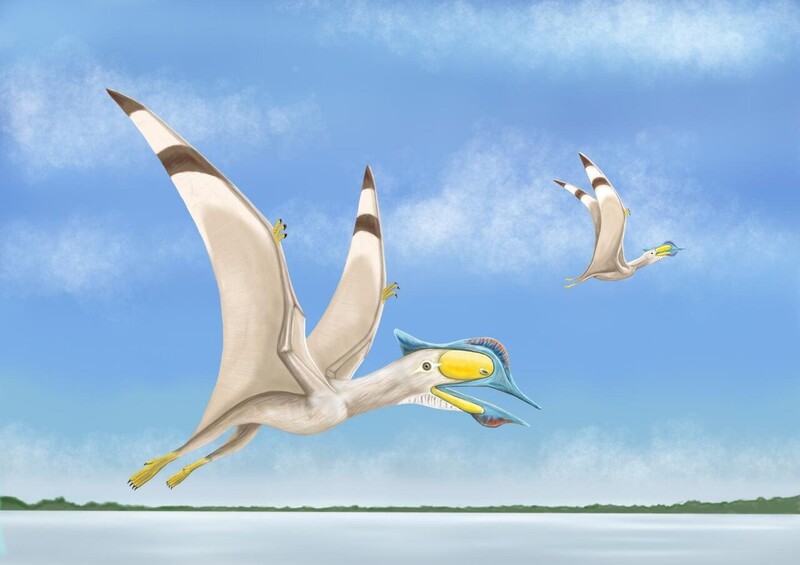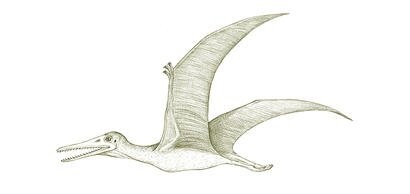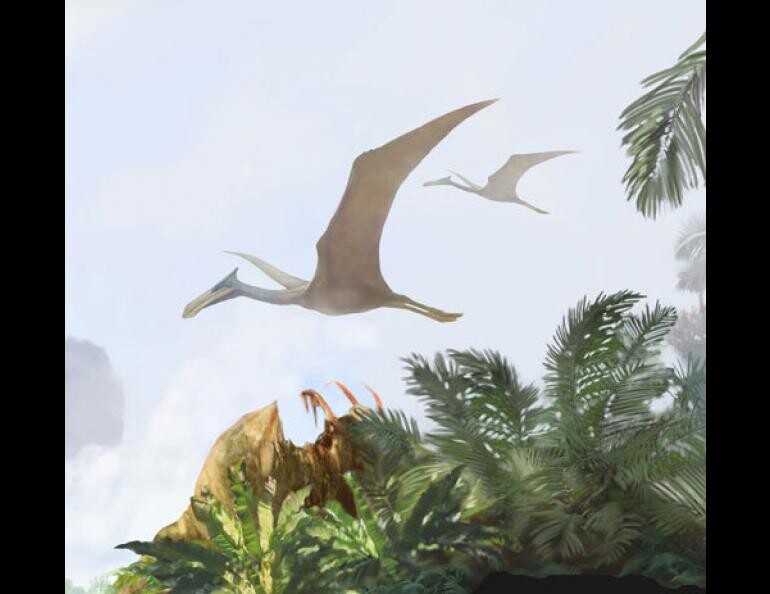Hot on the heels of a recent paper discovering three new species of pterosaur, university of portsmouth palaeobiologists have identified another new species – the first of its kind to be found on african soil.
Pterosaurs are the less well-known cousins of dinosaurs. They had adept flying ability – some as large as a fighter jet and others as small as a model aeroplane.

For the first time, flying reptiles were found in Africa
The new species belongs to a group of pterosaurs called tapejarids from the Cretaceous period. Tapejarids were small to medium-sized pterosaurs with wingspans perhaps as wide as four metres, most of which had large, broad crests sweeping up from the front of the skull.
They are well known in Brazil and China, and specimens have also been discovered in Europe, but this is the first time the flying reptile has been found in Africa.
It differs from the three recent species discovered as this one had no teeth – it was ‘edentulous’.
Professor David Martill, from the University’s School of the Environment, Geography and Geosciences, led the study. He said: “The study of Moroccan material shows that we are still far from having found all the paleontological treasures of North Africa. Even fragmentary fossils, like the jaw piece of the new pterosaur, can give us important information about the biodiversity of the past.”

Pterosaurs are less well-known relatives of dinosaurs
PhD student Roy Smith, one of the co-authors, said: “I feel very privileged to be part of such an exciting discovery. Working in the Sahara was a life-changing experience, and discovering a new species of pterosaur is the icing on the cake.”
The new pterosaur has been named Afrotapejara zouhrii to honour the Moroccan palaeontologist Professor Samir Zouhri. Originally a mammal specialist, Zouhri also contributed to several discoveries of prehistoric reptiles in Morocco, including dinosaurs and pterosaurs.
Professor Martill said: “The opportunity to illuminate the diversity of pterosaurs in Africa while honouring a colleague does not happen every day.”

They have adept flying abilities
The research team included Dr David Unwin from the University of Leicester and Dr Nizar Ibrahim from the University of Detroit Mercy.
Palaeontologist Dr Ibrahim, said: “Samir Zouhri has played an important role in the development of Moroccan palaeontology, not only through his publications, but also because he organised scientific conferences in Morocco and edited an entire volume for the Geological Society of France on the subject of vertebrate palaeontology in Morocco.”
The fossil material is part of the collections of the Faculty of Sciences Aïn Chock, Casablanca Hassan II University and the paper was published in Cretaceous Research.











